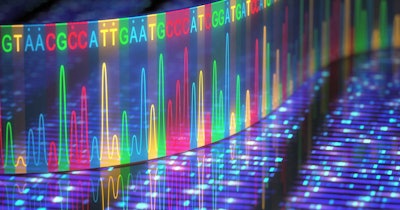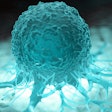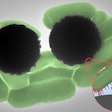
Researchers at the Ecole Polytechnique Fédérale de Lausanne (EPFL) have developed a new nanopore approach for manipulating individual molecules such as DNA that allows unprecedented control and precision.
The team’s findings, published in Nature Nanotechnology on Monday, demonstrate that the method can be used to determine DNA’s sequence of nucleotides, which encode genetic information, by analyzing how each molecule perturbs an ionic current as it passes through a nanopore in a membrane.
The team is led by Aleksandra Radenovic, head of the Laboratory of Nanoscale Biology in the School of Engineering, in collaboration with Georg Fantner and his team in the Laboratory for Bio- and Nano-Instrumentation.
The method, called scanning ion conductance spectroscopy (SICS), uses a glass nanopore mounted on a nanopositioner to spatially select molecules. The SICS system slows the molecule’s transit through the nanopore, allowing thousands of consecutive readings to be taken of the same molecule, as well as of different locations on the molecule.
“By controlling the distance between the nanopore and glass surface, we can actively select the region of interest on the molecule and scan it a controlled number of times and at a controlled velocity,” the authors wrote.
For the process, the researchers used a scanning ion conductance microscope that had recently been developed at the Lab for Bio- and Nano-Instrumentation.
In conventional methods, the transit of molecules through a nanopore and the timing of their analysis are influenced by random physical forces; the rapid velocity of the molecules makes analytical accuracy challenging. The SICS method’s ability to control a molecule’s transit speed and average multiple readings of the same molecule results in an increase in signal-to-noise ratio of two orders of magnitude compared to conventional free translocations, the team states.
“Imagine you are watching cars drive back and forth as you stand in front of a window. It’s a lot easier to read their license plate numbers if the cars slow down and drive by repeatedly,” said Fantner in a statement. “We also get to decide if we want to measure 1,000 different molecules each one time or the same molecule 1,000 times, which represents a real paradigm shift in the field.”
The researchers pointed out that SICS could be used with molecules other than DNA, including peptides, with potential applications in proteomics as well as biomedical and clinical research.
“Finding a solution for sequencing peptides has been a significant challenge due to the complexity of their ‘license plates,’ which are made up of 20 characters (amino acids) as opposed to DNA's four nucleotides,” added Radenovic. "For me, the most exciting hope is that this new control might open an easier path ahead to peptide sequencing.”














